ILM’s Glenn McIntosh was the animation supervisor on Colin Trevorrow’s Jurassic World. We recently caught up with him at the VIEW Conference in Italy where he showed off the animation techniques, mocap and other secrets behind the raptors, T-Rex and Indominus Rex. At the end of the film, the T-Rex in particular makes a heroic return to the screen by fighting the Indominus. We asked McIntosh about crafting the digital dino hero moments.
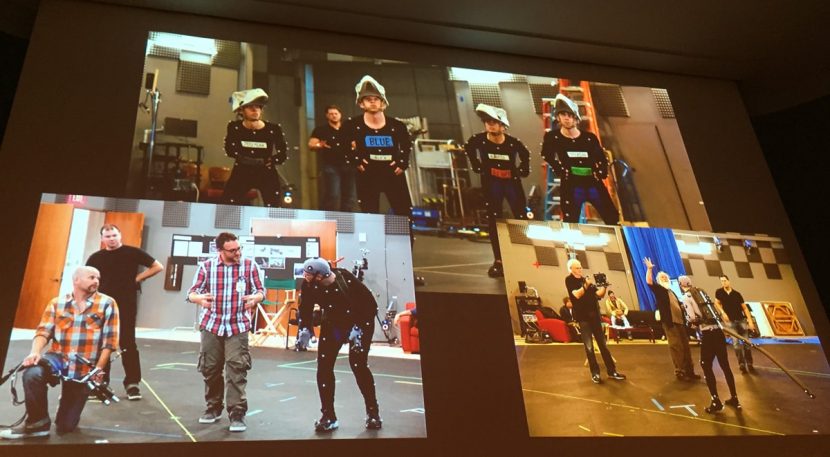
fxg: How did you approach that epic final sequence?
McIntosh: It was always understood that that final fight was going to be a big gigantic epic moment. Colin almost wanted the audience to be mad at him as a director – where you initially only get a peekaboo moment of the T-Rex earlier in the film. So it was almost like, well we showed the T-Rex and you won’t see her again. So the idea of re-introducing her and making her the hero was specifically designed to be a stand up and cheer moment. It’s also designed to be a moment where the ‘real’ dinosaurs gang up on the Frankenstein’d dinosaur that’s been created by humanity. That was to show that nature ultimately wins and can take over.
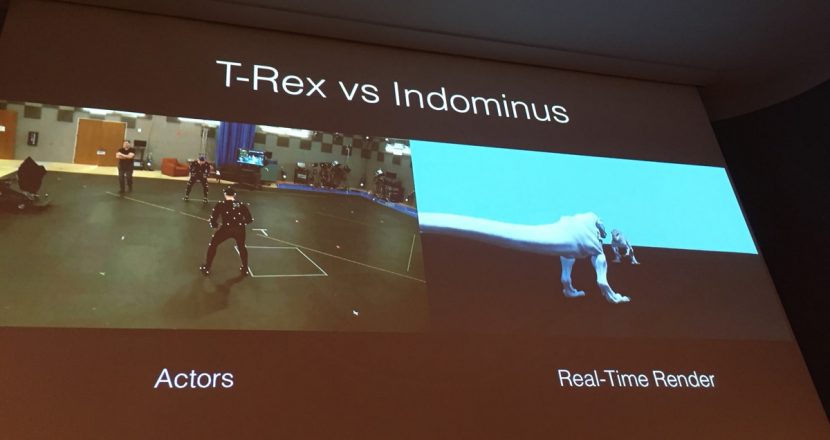
fxg: You were involved early on in sketching concepts and in previs – tell me about that process?
McIntosh: I was very lucky on this show to be involved so early. So much of the design of the character I thought was important – the idea that form follows function. I knew that the Indominus was going to have these really long arms, but I didn’t want to make something like a quadruped. She definitely still needed to be a biped and she could help herself up as she’s running. It’s also a key to when you see the raptor you think, oh that’s where the DNA came from.
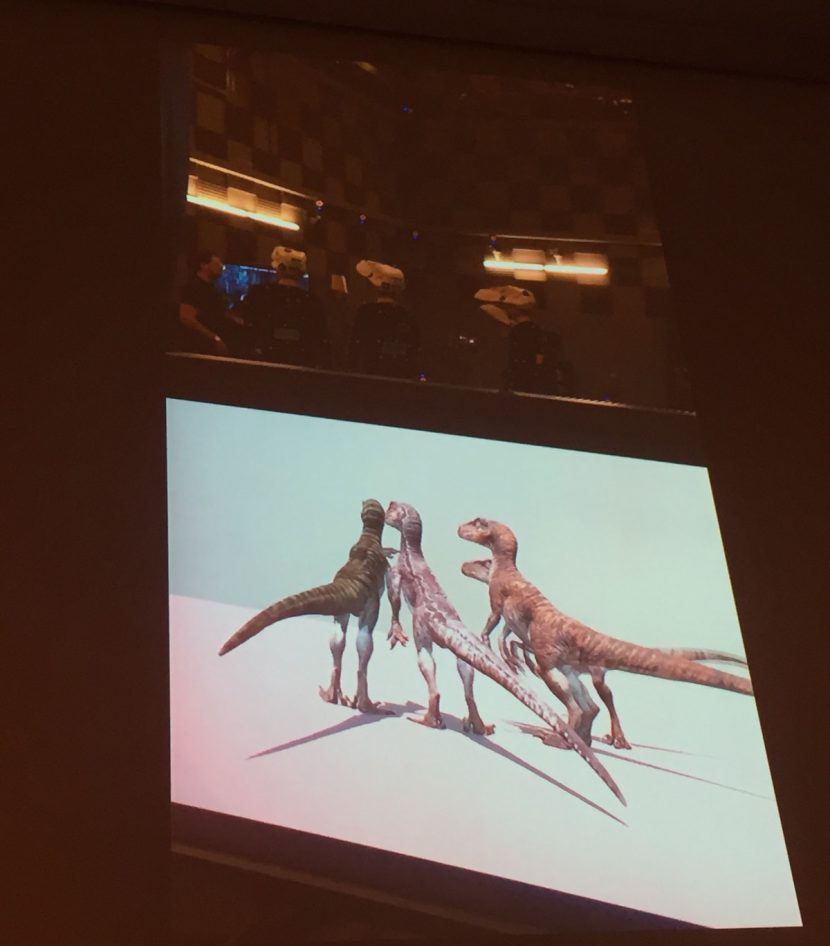
fxg: What reference did you look to for that final fight between the T-Rex, Indominus and the Raptors?
McIntosh: As much as possible we were looking at big animals that were in a fight to the death. What we really didn’t want was something that felt like a dance. We wanted to make it feel like there’s two huge animals and they’re so big they can’t even fit into their environment so their tails are smacking into light posts, they’re destroying bits of the building as they’re moving along – it also helps to reinforce how big they are because they’re destroying everything.
We looked at reference like bear fights. It represents two animals that are around 900 to 1200 pounds smashing into each other. That’s a great reference because we can look at that and extrapolate it up to two dinosaurs that are nine tonne just smashing into each other. Using that reference was also a great way for Colin to imagine what we were doing because we could also show the action and the reference.
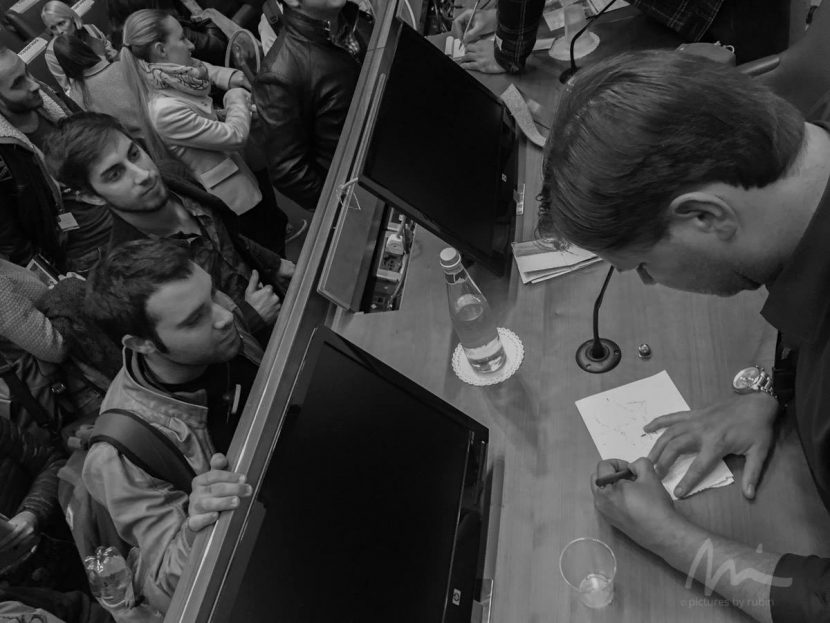
We also looked at lions fighting because it gave us the idea for how the Indominus uses her claws to scratch, and the T-Rex doesn’t have that advantage so how does he get an advantage back. So we looked at the Komodo dragons and how they’ll smash into each other and make a dance. The way the dragon’s skin tears away over the evolution of a fight was also good reference – their skin is so thick that it actually withstands things really well.
fxg: What then led to using motion capture for the raptors and also the other dinosaurs?
McIntosh: We realized early on there were going to be just short of 1000 shots, and we were going to have to do in a very limited period of time. One of the other reasons wasn’t just the sheer volume of shots, but being able to get different takes in front of Colin as fast as possible so that he felt comfortable in the performance. I thought that blocking animation would certainly get there, but it was a question of, can we do something that’s pushes the performance and allows Colin to be able to review the work in the way that you would review it with the actors? Say like using multiple takes.
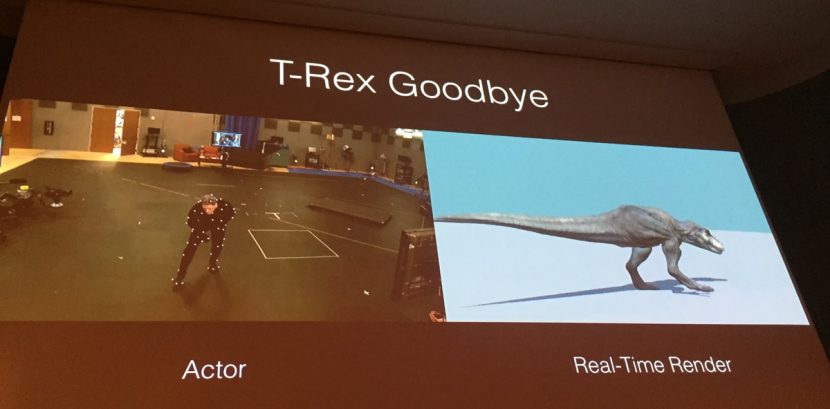
Having realtime feedback meant we were able to very quickly review the action and see that it was going to work. If it was just point cloud data or skeletons moving around it would have been very tricky to review the performances. So having the fully fleshed out, full raptors with textures was just invaluable.
fxg: I’ve seen a lot of behind the scenes of the raptor mocap, but was surprised to see the Indominus Rex mocap too – which you did!
McIntosh: Well it was a great opportunity to see if we could extrapolate the data so that we could scale it up or globally slow it down. We wanted to see if we could slow something down so that you can take a human and make it feel like an animal – 30 to 35 per cent you can get away with, but anything slower than that it starts to feel under-watery. Once we had a couple of those tests going, it allowed us to realize we can really push the envelope of what’s capable.
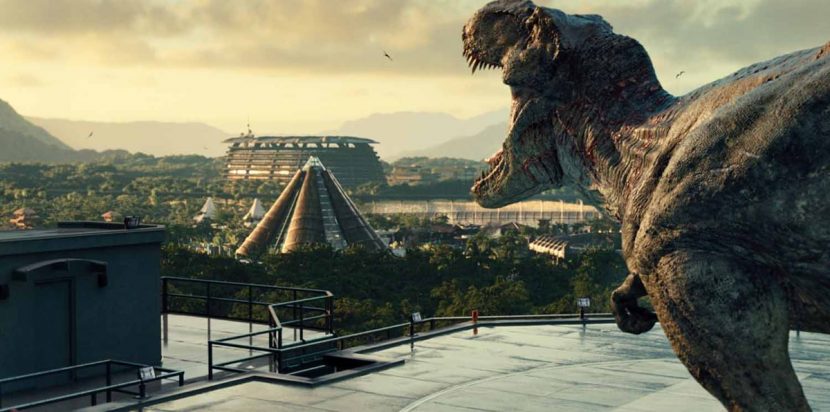
fxg: For that final fight, what were the things you discussed with the mocap performers, or animators, that were important to input into the T-Rex to make him heroic?
McIntosh: There were deliberate moments that were ‘stand and up cheer’ – one of the moments was when Bryce is holding the flare and the T-Rex comes walking out of the gloom. The glare from her eyes from the flare is reflected back. That’s actually based on a storyboard that was done from the first film. Then when everyone’s cheering, she comes out and does her big roar. Then there’s her next roar which is the destruction of the Spinosaur skeleton, which I personally asked to animate. It was so much fun to be able to get revenge on the Spinosaur from Jurassic Park III, and destroy the skeleton and metaphorically win that battle again.
They actually nearly were going to shoot that skeleton for real by blowing it up. Tim Alexander (overall vfx supe) were of the opinion that if we don’t blow it up we’re going to be able to better co-ordinate the choreography of how the T-Rex is going to destroy it. If we had put pyro elements in it, it might have exploded in as as opposed to feeling like it was being pushed.
fxg: There’s also that final moment where the T-Rex is overlooking the park, which of course is hugely heroic.
McIntosh: Yes, at that point the music is swelling and you can’t go wrong with Michael Giacchino and the theme from John Williams. It was also the idea that not only did the T-Rex claim dominion over the kingdom, but that then becomes ‘the Jurassic World’. She’s the queen of her kingdom again. It’s a very triumphant roar – she’s back and she’s arrived. I wanted to make sure we put in a few Pteranodons around to show they didn’t kill all of them and also reinforce the idea that this Jurassic World had literally been taken over again by the dinosaurs. I think people cheered that event.
Jurassic World is out now on DVD and Blu-ray. All images and clips copyright 2015 Universal Studios.
